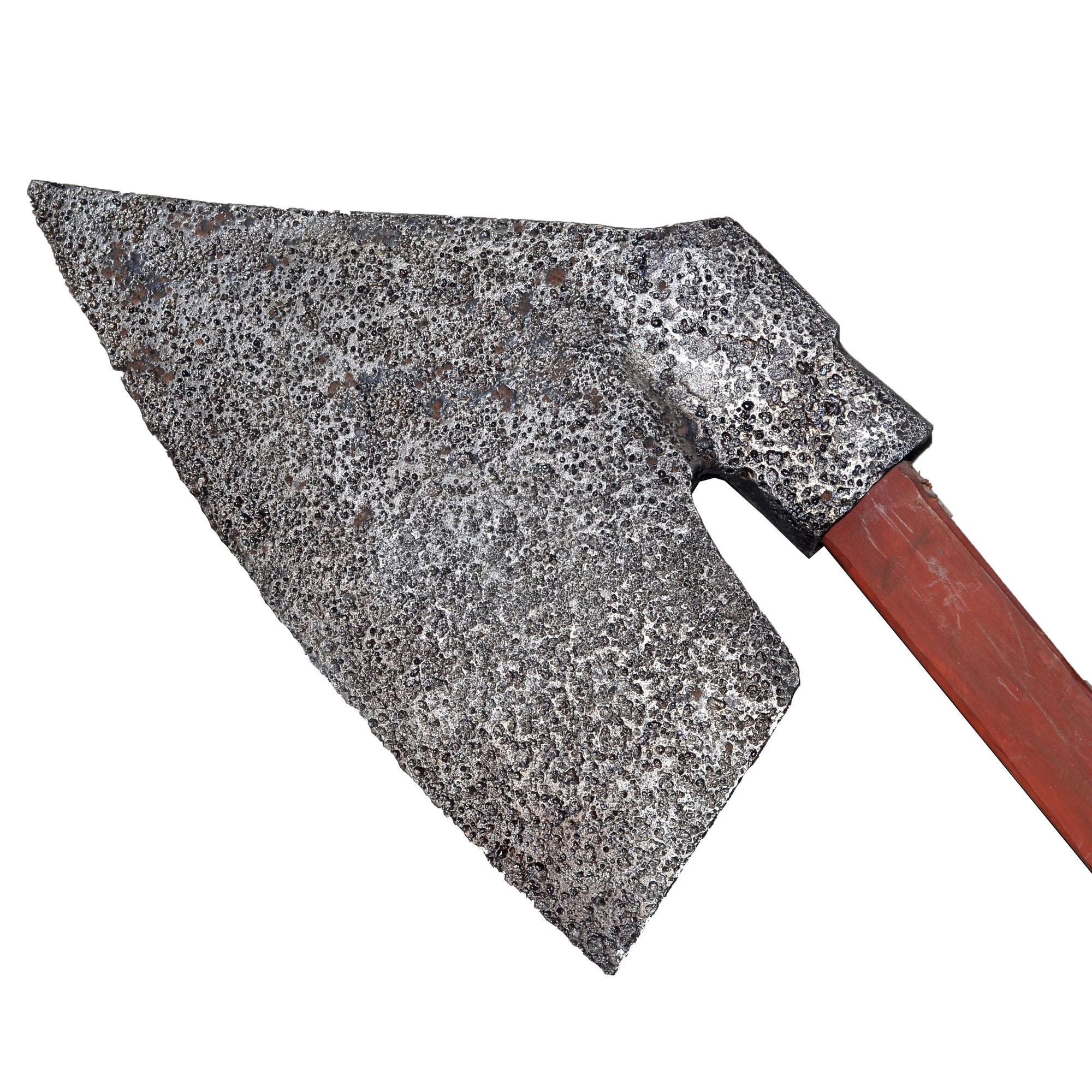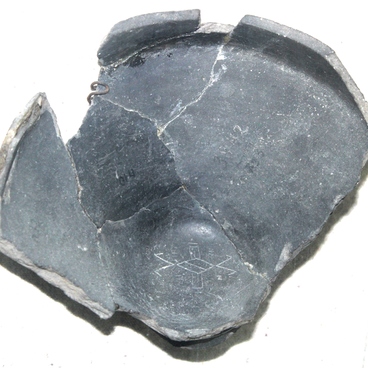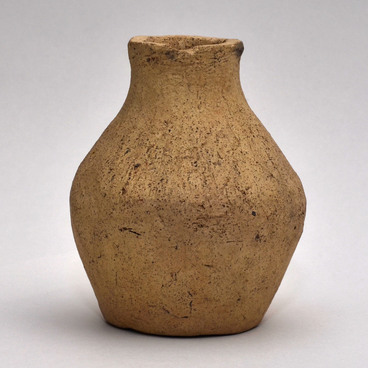In ancient Russia, hewing axes were used to trim logs. Most of carpentry was done with this instrument, forged from solid steel that could sustain heavy and continuous load. Sometimes the quality of the metal used for those axes was even better than that used for making weapons. The handle was usually made from birch wood. Its length was determined based on the height of the artisan who was to use the instrument. The long handle served as a lever: during work, it balanced the heavy part so that the work was not so tiresome for the artisan. At the end of the handle there was a thickening that helped the axe not to slip out from the hand at the moment of a swing or a blow.
Hewing axe
Время создания
XVI century
Размер
34x20,5 cm
34х20,5 cm
34х20,5 cm
Техника
Steel, forging
Коллекция
Выставка
3
Открыть в приложении#1
Hewing axe
#2
#3
The cutting edge of the axe was always displaced respect to the eye so that it would be easier to trim logs. Carpenters used both right-sided and left-sided axes. They chose the type of the instrument depending on the side on which the log had to be trimmed and the artisan’s dominant hand.
The first carpentry axes that looked like hewing axes appeared in the 14-15th centuries in Austria and Germany. There, they were called “Zimmermannbeil”. Later, those instruments became popular in Poland, Lithuania, Ukraine and Belorussia, and from there, they came to Russia. Such axes were also called “goosewing” because of the peculiar shape of the cutting edge.
#4
Hewing axes were not a weapon of war but could be used as such when necessary. The heavy and broad blade could easily cut ring-armour as well as plate-armour. The long upper part of the blade could be used to stab, like a lance. Sometimes, there was a narrow slit between the blade and the eye where the adversary’s sword could be caught in order to break it or knock it out from the enemy’s hands. When a hewing axe was used in a battle, the normal handle was usually substituted with a long one in order to make a kind of a heavy halberd.
#5
Hewing axes were treated in ancient Russia with great care and respect. Like other iron instruments, they were considered an amulet against illnesses and the evil spirit. In the Russian North, there was a belief among the shepherds that if one walks around a herd of cattle with an axe, it would not be attacked by predators.
After the work was finished, the axe was never left driven into the log or leaned against a wall. Someone could touch the instrument left in such a way and get wounded, and the blade could go blunt when treated like that. So the axe was left under a bench where it did not get in anybody’s way.
#6
Bryansk State Regional Ethnography Museum
читать дальшескрыть
00:00
00:00
1x
Hewing axe
Время создания
XVI century
Размер
34x20,5 cm
34х20,5 cm
34х20,5 cm
Техника
Steel, forging
Коллекция
Выставка
3
Открыть в приложении
Поделиться


